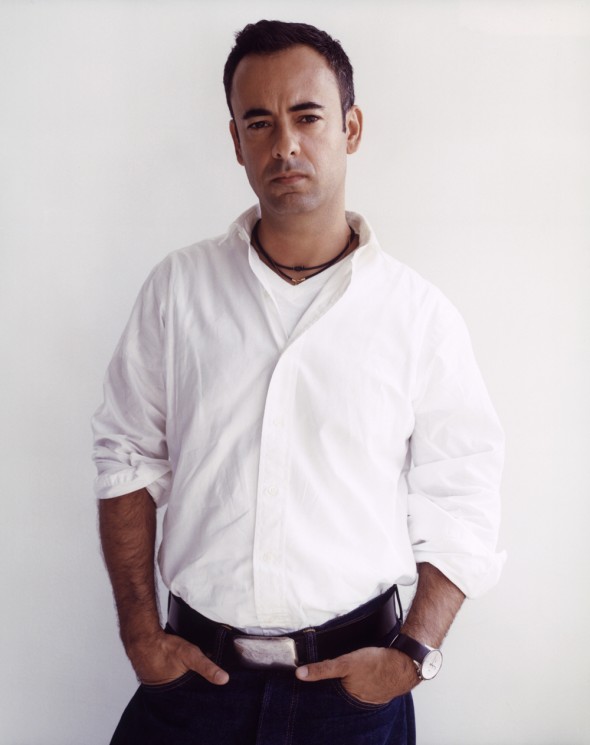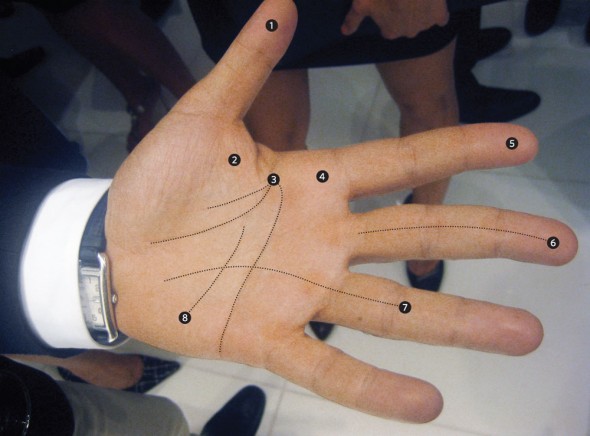
Francisco Costa knows what women want. As Creative Director for Calvin Klein over the past six years, his sartorial creations have empowered and inspired womenswear the world over; yet always remain fresh and pure in their minimalism—the very essence of the Calvin Klein label. Known for neutral and earthy palettes informed by the sporting life of the classic American equestrian, Costa has also been noted for his bold choices of cold, aquamarine tones and the sharp, architectural shapes of his eveningwear. But whatever the season, or for whatever the creative reason, Costa has never been charged with failing to add a fresh bolt of electricity to the Klein empire. And the praise seems unwavering: highlights of Costa’s more recent achievements include receiving Best Womenswear Designer awards in ‘06 and ‘08 from the Council of Fashion Designers of America (CFDA) and, just this summer, the Cooper-Hewitt National Design Award for Fashion Design.
Yet for all the seemingly easy glory and fanfare, Costa’s background seems out of step with your typical Fashion Institute of Technology graduate. The designer grew up in a cobblestone Baroque village in Brazil, born to a mother that designed dresses and would later own a childrenswear factory. Soon after she died, in the mid-’80s, the 22-year-old hopped on a plane bound for NYC, telling his father he was off to study both fashion and English. Naturally, his father called him crazy. Little did he know that the boy would one day go on to rise through the ranks at a powerhouse like Oscar de la Renta. After making great strides in his craft there for five years, Costa was handpicked by Tom Ford to design for Gucci. It was there that he and Ford launched the much-lauded Spring 1999 Cher collection, inspired by the musician herself.
After designing for Calvin Klein for just one year, Costa was soon given an unheard of opportunity—to become the heir apparent to Klein as head of design. From the designer’s casual, breezy Resort collections that give nods to the swinging ’60, to his ready-to-wear basics of icy geometrical shapes and textures, Francisco Costa has been designing for the female form with fierce precision. And the world of fashion is taking note.
How, if at all, did your childhood in Brazil influenced the way in which you approach fashion design?
When people think about Brazil, they think about electric colors and lots of skin, but that’s really more what you find in Rio. I grew up in a very small town in Brazil, where people dressed very simply and typically in all white, because of the heat. They appreciated family, the luxury of space, being well-read and very straight forward. It was also a place that was very much about the elements—air, space, and water with lots of grays and greens. It really is very “Calvin Klein.”
You have drawn inspiration for some of your designs from the time you spent in Yellowstone National Park. How has the natural world played a role in your creative process?
Art and architecture are constant sources of inspiration for me and they inform much of my work. Everything inspires me—a pebble on the beach, a bird in the sky, a woman in the street, an art exhibit—they all impact me in different ways.
Over the past decade there seems to have been an increase in high fashion exhibits being presented in a fine art setting. Does this seem to be a natural progression in your eyes?
I don’t see it as a progression, but rather a reality. Fashion has always been on the radar, generating interest among the general public, so to me exhibits that incorporate art and fashion seem very natural.
What do you still find truly mysterious about the process of design/fashion?
I really find that there is a magic to the whole design process—especially seeing how an idea evolves and mutates to reality and into the actual three dimensional clothes themselves.
– Amity Bacon

This reading is by Lena, who has no idea this palm belongs to Francisco Costa.
1. He is not fond of manual labor and prefers to work with his mind.
2. He has quite a fierce temper that comes up when he is thwarted in reaching his goal/desire, but he gets over his anger quickly.
3. Fond of risk taking, however, he takes those risks very carefully. His heart does not mind the sensation of fear, but his brain is very cautious and will always calculate the odds.
4. Does not follow leaders. He simply assumes others will follow him and walks on ahead, forging his own path. Sometimes others follow, sometimes they don’t.
5. A gamblers hand. It’s the kind of luck that’s made by intelligence and forethought.
6. Rebels against the old ways. He does not respect authority and is not someone who follows the rules.
7. This is someone who will be famous from time to time but is not invested in achieving fame. He will have (and spend) a lot of money from time to time, but he is not invested in amassing great wealth.
8. His exceptional intelligence probably didn’t show until he was near adult-hood — when he figured out how to use his very unique brain to good advantage.

